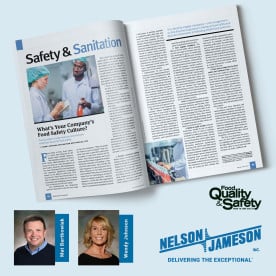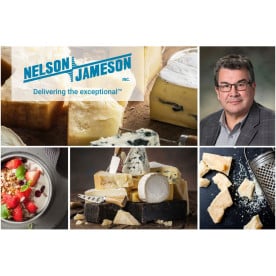Monthly Archives: October 2013
- October 30, 2013
Time Magazine recently featured an article that looked into the many misconceptions consumers have when it comes to their food being labeled with “sell by,” “best
- October 23, 2013
The publication of the USDA’s “Why Are Americans Consuming Less Fluid Milk? A Look at Generational Differences in Intake Frequency” this May has lead to frank discussion in the dairy industry. Citing a ‘“slow continuous shift downward’ in milk drinking since the 1940s,” the report analyzes the causes and potential effects of this downward trend. The trend has been especially felt significantly in the last several decades: “Since 1970 alone, per capita fluid milk consumption has fallen from 0.96 cup-equivalents to about 0.61 cup-equivalents per day”.
So, what is going on here? The authors point to several issues that have energized this trend including the following: frequency of consumption, a diversified marketplace, and generational differences. In regards to frequency, Americans “have become less apt to drink fluid milk at mealtimes, especially with midday and nighttime meals, reducing the total number of consumption occasions.” Part of the reason the frequency has decreased is due to an expanding array of beverage options that are out there for the average consumer.
Milk has been displaced by the consumption of energy drinks, sodas, juices, tea, coffee, etc. The current market offers a wide selection of beverages, choices, and purported claims. For younger consumers this variety and choice is something they have always known, unlike older consumers who remember fewer choices and a lack of access to Taurine-infused energy drinks, iced teas, iced coffee drinks, chocolate soy milk, etc.
- October 16, 2013
Prevent premature washdown hose wear and failure. Washdown hoses are often subjected to physical abuse while in service. Select a hose that meets or exceeds the application
- October 09, 2013
Compared to a few years ago, food safety fears in China have surged among consumers. The 2008 melamine/infant formula scare that killed several and sickened approximately 300,000 has been a cornerstone for this growing concern. Chinese parents have taken to other methods to procure formula for their children since, including the following: importing of brands from outside of the country, smuggling, obtaining via the mail, and even as featured in the New York Times, instructing friends, family, and others to bring home formula back from their international vacations.
As one Chinese mother said
- October 03, 2013
Color-coding is an essential part of many of the operations that we at Nelson-Jameson sell to in the food industry. Color-coded products provide an effective way to organize materials/areas and to prevent cross-contamination. Working with our suppliers, Nelson-Jameson has aimed to offer an unprecedented, wide range of colors and products to meet the needs of our customers. You can check out our current catalog of color-coded products here.
Right now, we are working on adding even more colors and products to our offerings. This is where we would like your help! We are considering the inclusion of a new color, pink. If we were to add this color to our offerings, what specific items would you like to see added?
In addition, we are seeking out ways to take on customer needs when it comes to existing lines. What color gaps (orange, purple, black, etc)





